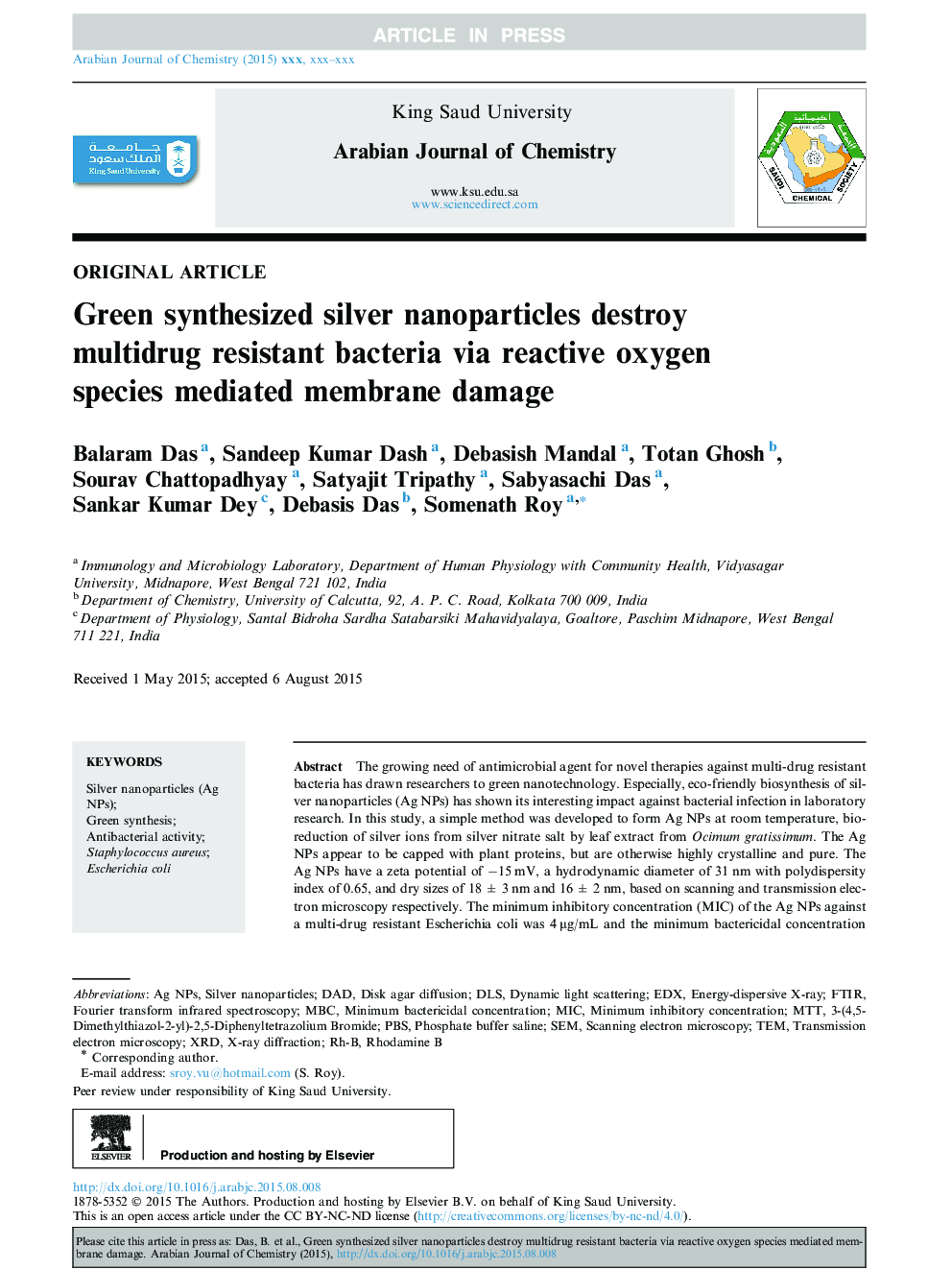| Article ID | Journal | Published Year | Pages | File Type |
|---|---|---|---|---|
| 5142003 | Arabian Journal of Chemistry | 2017 | 15 Pages |
Abstract
The growing need of antimicrobial agent for novel therapies against multi-drug resistant bacteria has drawn researchers to green nanotechnology. Especially, eco-friendly biosynthesis of silver nanoparticles (Ag NPs) has shown its interesting impact against bacterial infection in laboratory research. In this study, a simple method was developed to form Ag NPs at room temperature, bio-reduction of silver ions from silver nitrate salt by leaf extract from Ocimum gratissimum. The Ag NPs appear to be capped with plant proteins, but are otherwise highly crystalline and pure. The Ag NPs have a zeta potential of â15 mV, a hydrodynamic diameter of 31 nm with polydispersity index of 0.65, and dry sizes of 18 ± 3 nm and 16 ± 2 nm, based on scanning and transmission electron microscopy respectively. The minimum inhibitory concentration (MIC) of the Ag NPs against a multi-drug resistant Escherichia coli was 4 μg/mL and the minimum bactericidal concentration (MBC) was 8 μg/mL, while the MIC and MBC against a resistant strain of Staphylococcus aureus were slightly higher at 8 μg/mL and 16 μg/mL respectively. Further, the Ag NPs inhibited biofilm formation by both Escherichia coli and S. aureus at concentrations similar to the MIC for each strain. Treatment of E. coli and S. aureus with Ag NPs resulted in damage to the surface of the cells and the production of reactive oxygen species. Both mechanisms likely contribute to bacterial cell death. In summary, this new method appears promising for green biosynthesis of pure Ag NPs with potent antimicrobial activity.
Keywords
Silver nanoparticles (Ag NPs)EDXDLSMICDADMBCPBS3-(4,5-dimethylthiazol-2-yl)-2,5-diphenyltetrazolium bromideMTTAg NPsStaphylococcus aureusEscherichia coliEnergy-dispersive X-rayTemminimum bactericidal concentrationMinimum inhibitory concentrationRhodamine BGreen synthesisFTIRFourier transform infrared spectroscopyphosphate buffer salineAntibacterial activitySEMScanning electron microscopyTransmission electron microscopySilver nanoparticlesX-ray diffractionXRDDynamic Light Scattering
Related Topics
Physical Sciences and Engineering
Chemistry
Chemistry (General)
Authors
Balaram Das, Sandeep Kumar Dash, Debasish Mandal, Totan Ghosh, Sourav Chattopadhyay, Satyajit Tripathy, Sabyasachi Das, Sankar Kumar Dey, Debasis Das, Somenath Roy,
